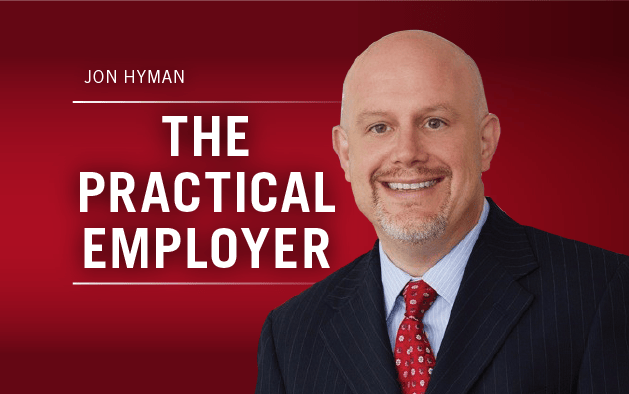Conference season is in full swing, and I’d love to share some takeaways with you! I attended a Society for Industrial and Organizational Psychology conference in Chicago on April 19 and 20, and the speakers I saw and topics they discussed were fascinating.
I-O psychology, also known as workplace psychology, is “a branch of psychology that applies psychological theories and principles to organizations,” and a major focus of this field are areas like increasing workplace productivity and improving the mental and physical well-being of employees. It also strives to best match an employee with a job role. That’s what I’d like to explore in this blog: the role of the IQ test in recruitment.
To me there’s something inherently interesting to me about the potential tension between science and practice. That is, a researcher can discover some objective scientific fact (or at least a very well-supported hypothesis that could technically be disproved at some point in the future), and how that discovery is put into practice might be questionable.
I’ve mentioned before a fantastic book called The Gene: An Intimate History by Siddhartha Mukherjee, who explores the history of genetic discoveries, including the inception of the IQ tests and the inquiries from researchers on whether or not intelligence is genetic. According to the book, Stanford psychologist Lewis Terman created this IQ test in 1916 to determine whether someone’s mental age was equivalent to their physical age. It’s important to note that he was a supporter of the American eugenics movement, which posited that certain races were inherently superior and more intelligent than others.
This brings me to two speakers at the SIOP conference. Dr. Thomas J. Bouchard, professor emeritus, University of Minnesota, won the SIOP’s Dunnette prize for his 20-year study MISTRA — the Minnesota Study of Twins Raised Apart. His speech focused on the findings of this research, which found a strong genetic link in IQ test scores. Joel P. Wiesen, meanwhile, gave a lecture on the limitations of using IQ tests only to rank police officer applicants and suggested 15 alternative ways police departments could rank applicants — along with pros and cons of those alternative options.
To me, these two represented the theory and the practice sides of psychology.
Bouchard’s research in the twin studies was extensive and impressive. He launched the study in the 1970s in a very anti-IQ environment. One argument was that IQ tests equal racism, which he wanted to disprove. Another argument stated that a person’s abilities, activities and attitudes cannot be measured; Bouchard disagreed. A notable debate at the time was if intelligence was influenced by genetics or socioeconomic status and the opportunities that came with the status.
What Bouchard ended up finding was a strong link between IQ scores and genetics. Twins growing up apart in very different environments did not change the similarity that had in general intelligence.
I came out of the sessions with several questions: Since the IQ test was man-made by a person who had certain beliefs and who lived in a certain time and place in history, aren’t there inherent biases within it? Isn’t that true with any man-made assessment? How significant should a person’s IQ be in their job prospects?
I learned a lot about the science behind IQ, but what are the limitations of IQ in practice? What if what one person considers a trait of an intelligent person is not what another person considers a trait of an intelligent person? I also thought of kids with whom I attended to high school who were very intelligent but did badly on standardized tests because they were nervous or bad at taking tests. Could the same principal apply to IQ tests?
Bouchard did not address these. The focus of his presentation was his research, so as an attendee I do not know his point of view on how IQ tests should be used in a professional setting or how much weight we should give the IQ score in evaluating the fitness of a person for a job. Wiesen’s lecture on IQ and hiring in police departments did, however, provide many answers for me.
When police departments rely on a narrow IQ test to rank applicants, they often find that white applicants have higher scores, on average, than other applicants, which ends up decreasing the diversity of the police force. He also brought up the fact that, long ago, psychologists were at the forefront of the eugenics movement [See: Lewis Terman], which brings up a moral issue. How could psychologists have been so wrong, he asked, and isn’t it technically possible for them to be making similar mistakes now?
He made alternative suggestions for how departments could rank applicants instead. One of my favorite suggestions was the “Greatest Strength Method.” That is, when applicants take a variety of tests of different competencies, they’re considered for what they performed best on. That way, you get a workforce that is not cookie cutter and has a variety of strengths.
I found this to be especially relevant considering the current political climates surrounding police officers and civilians, and the discussions around #BlackLivesMatter and #BlueLivesMatter.
So, what do you think? How large should the role of intelligence testing (or really any formalized testing) be in recruitment?
Other Observations: One speaker brought up a term that’s new to me: psychological capital, described as a combination of hope, resiliency, self-efficacy and optimism that leads to positive workplace outcomes like higher performance and better job satisfaction. This speaker connected psychological capital with practicing mindfulness, but I’m curious: What do you do to develop psychological capital in your organization?
In a panel discussion about the positive and negative impacts of technology, the panelists brought up an interesting point of view. They believed people aren’t addicted to their phones (they’re just dependent) and seemed pretty annoyed that the media likes to ask questions about phone addiction. (I was entertained by that comment.) One panelist mentioned how people aren’t addicted to their phone because this dependency is more of a sign that people inherently need to connect with other people.
My reaction: Sure, the word addiction is probably overused but I can think about a lot of people who could be much less dependent on their phones. Also, I wonder if there’s room in this workplace discussion about social connection, teamwork and collaboration to also acknowledge the value of knowing how to be alone, work alone and disconnect from technology once in a while.
What do you think? Do you think this talk about phone addiction hype is all hype? Do you see technology as more of a tool or a crutch at your organization?
Andie Burjek is a Workforce associate editor. Comment below or email editors@workforce.com.







